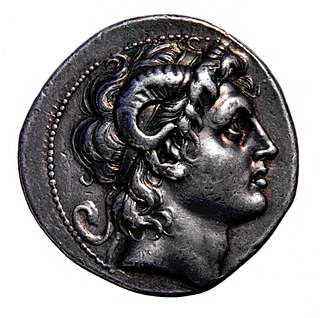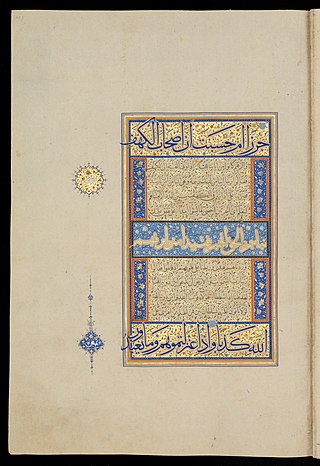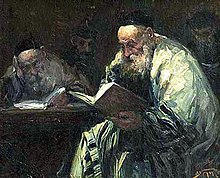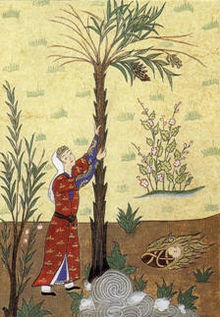
According to apocrypha, as well as Christian and Islamic tradition, Saint Anne was the mother of Mary, the wife of Joachim and the maternal grandmother of Jesus. Mary's mother is not named in the Bible's canonical gospels. In writing, Anne's name and that of her husband Joachim come only from New Testament apocrypha, of which the Gospel of James seems to be the earliest that mentions them. The mother of Mary is mentioned but not named in the Quran.

The virgin birth of Jesus is the Christian doctrine that Jesus was conceived by his mother, Mary, through the power of the Holy Spirit and without sexual intercourse. Christians regard the doctrine as an explanation of the mixture of the human and divine natures of Jesus. The Eastern Orthodox Churches accept the doctrine as authoritative by reason of its inclusion in the Nicene Creed, and the Catholic Church holds it authoritative for faith through the Apostles' Creed as well as the Nicene. Nevertheless, there are many contemporary churches in which it is considered orthodox to accept the virgin birth but not heretical to deny it.

Ibrahim was a prophet and messenger of God according to Islam, and an ancestor to the Ishmaelite Arabs and Israelites. Abraham plays a prominent role as an example of faith in Judaism, Christianity, and Islam. In Muslim belief, Abraham fulfilled all the commandments and trials wherein God nurtured him throughout his lifetime. As a result of his unwavering faith in God, Abraham was promised by God to be a leader to all the nations of the world. The Quran extols Abraham as a model, an exemplar, obedient and not an idolater. In this sense, Abraham has been described as representing "primordial man in universal surrender to the Divine Reality before its fragmentation into religions separated from each other by differences in form". Muslims believe that the Kaaba in Mecca was built by Abraham and his son Ishmael as the first house of worship on earth. The Islamic holy day 'Eid ul-Adha is celebrated in commemoration of Abraham's willingness to sacrifice his son on God's command, as well as the end of the Hajj pilgrimage to the Kaaba.

In Islam, Jesus is believed to be the penultimate prophet and messenger of God and the Messiah sent to guide the Children of Israel with a book called the Injīl.
Yaqub ibn Ishaq ibn Ibrahim, later given the name Israil, is recognized by Muslims as an Islamic prophet. He is held to have preached the same monotheism as his forefathers: Abraham, Ishmael, and Isaac.

Yusuf is a prophet mentioned in the Quran and corresponds to Joseph, a person from the Hebrew and Christian Bible who was said to have lived in Egypt before the New Kingdom. Of Jacob's children, Joseph reportedly had the gift of prophecy through dreams. Although the narratives of other prophets are presented in a number of surahs, Joseph's complete narrative appears in only one: Yusuf. Said to be the most detailed narrative in the Quran, it contains more details than its biblical counterpart.

Sulaimān ibn Dāwūd was, according to the Quran, a malik and nabī of the Israelites. Generally, Islamic tradition holds that he was the third king of Israel and a wise ruler.

The Syriac Infancy Gospel, also known as the Arabic Infancy Gospel, is a New Testament apocryphal writing concerning the infancy of Jesus. It may have been compiled as early as the sixth century, and was partly based on the Infancy Gospel of Thomas, the Gospel of James, and the Gospel of Pseudo-Matthew. The only two surviving manuscripts date from 1299 AD and the 15th/16th century in Arabic. They were copied in the area of northern Iraq and show influence from the Quran.

The story of Dhu al-Qarnayn, is mentioned in Surah al-Kahf of the Quran.

Al-Ma'idah is the fifth chapter (sūrah) of the Quran, with 120 verses (āyāt). Regarding the timing and contextual background of the revelation, it is a "Medinan surah", which means it is believed to have been revealed in Medina, instead of Mecca.

Al-Kahf is the 18th chapter (sūrah) of the Quran with 110 verses (āyāt). Regarding the timing and contextual background of the revelation, it is an earlier "Meccan surah", which means it was revealed in Mecca, instead of Medina.

Maryam is the 19th chapter (sūrah) of the Qur'an with 98 verses (āyāt). The 114 chapters in the Quran are roughly ordered by size. The Quranic chapter is named after Mary, mother of Jesus (Isa), and the Virgin Mary in Christian belief. It recounts the events leading up to the birth of Jesus, subject matter covered in Luke 1 of the Christian Bible. The text of the surah refers to many known prophetic figures, including Isaac, Jacob, Moses, Aaron, Ishmael, Idris, Adam, Zechariah and Noah.

Dhu al-Qarnayn, appears in the Quran, Surah Al-Kahf (18), Ayahs 83–101 as one who travels to east and west and sets up a barrier between a certain people and Ya'juj and Ma'juj. Elsewhere the Quran tells how the end of the world will be signaled by the release of Gog and Magog from behind the barrier. Other apocalyptic writings predict that their destruction by God in a single night will usher in the Day of Resurrection.

Maryam bint Imran is revered in Islam. The Qur'an refers to her seventy times and explicitly identifies her as the greatest woman to have ever lived. In the Quran, her story is related in three Meccan surahs and four Medinan surahs. The nineteenth Surah, Maryam, is named after her. Moreover, she is the only woman named in the Quran. The Quran refers to her more often than the Bible.
Women in the Quran are important characters and subjects of discussion included in the stories and morals taught in Islam. Most of the women in the Quran are represented as either mothers or wives of leaders or prophets. They retained a certain amount of autonomy from men in some respects; for example, the Quran describes women who converted to Islam before their husbands or women who took an independent oath of allegiance to Muhammad.
The biblical account of the crucifixion, death, and resurrection of Jesus (ʿĪsā) recorded in the Christian New Testament is traditionally rejected by the major branches of Islam, but like Christians they believe that Jesus ascended to heaven and he will, according to Islamic literary sources, return before the end of time. The various sects of Islam have different views regarding this topic; traditionally, mainstream Muslims believe that Jesus was not crucified but was bodily raised up to heaven by God, while Ahmadi Muslims reject this belief and instead contend that Jesus survived the crucifixion, was taken off the cross alive and continued to preach in India until his natural death.
The Quran contains references to more than fifty people and events also found in the Bible. While the stories told in each book are generally comparable, there are also some notable differences. Knowing that versions of these stories written in the Hebrew Bible and the Christian New Testament did exist before the Quran, scholars consider similarities between these Islamic, Jewish and Christian texts. Muslims believe the Quran to be direct knowledge from the Creator of existence. As such, some Muslims believe that the earlier versions are distorted through flawed processes of transmission and interpretation over time, and consider the Quran's version to be more accurate.
An-Nasr,, is the 110th chapter (sūrah) of the Qur'an with 3 āyāt or verses.
Among the books considered to be revealed by God in the Quran, the three mentioned by name are the Tawrat, the Arabic-language name for the Torah within its context as an Islamic holy book believed by Muslims to have been given by God to the prophets and messengers amongst the Children of Israel; the Zabur (Psalms) revealed to Dawud (David); and the Injil (Gospel) revealed to Isa (Jesus). The Quran mentions the Torah, Psalms, and Gospel as being revealed by God in the same way the Quran was revealed to Muhammad, the final prophet and messenger of God according to Muslims.

According to the Islamic doctrine, Zakariyā is a prophet and messenger of God, and a father of the prophet Yahya.

















